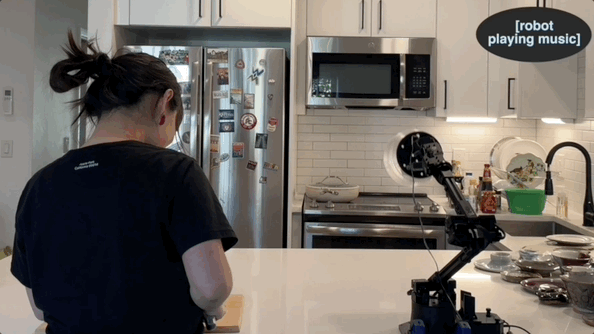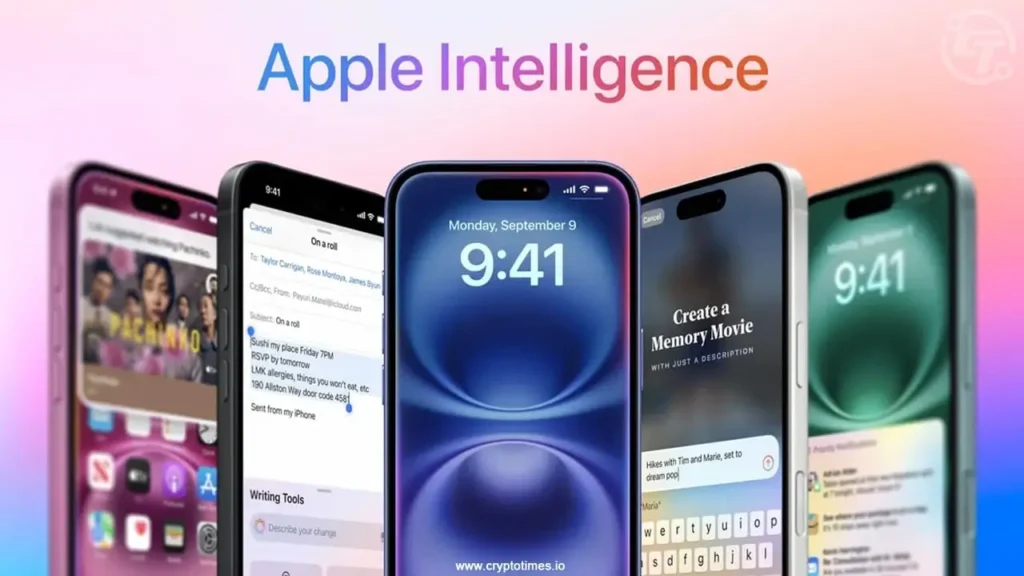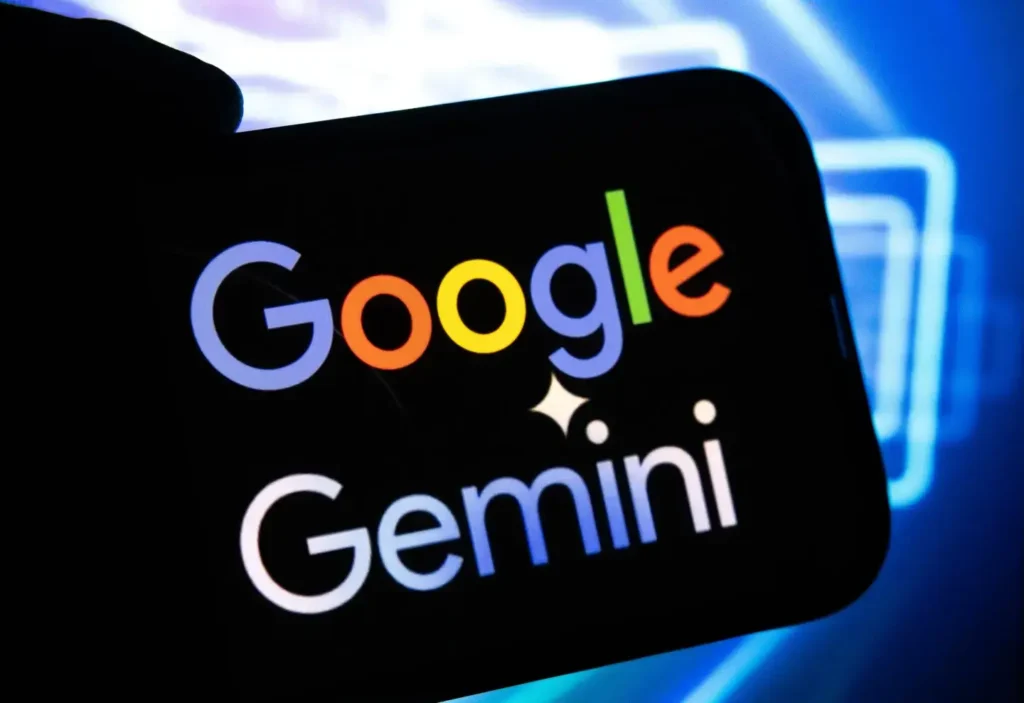Apple’s Expressive Robot Lamp Prototype Unveiled Today

Apple’s relentless pursuit of innovation has now led to a charming breakthrough in robotics—a super-cute, expressive robot lamp that gives major Pixar vibes. This prototype, unveiled as part of Apple’s Machine Learning Research, isn’t just a lamp; it’s a demonstration of how integrating expressive movement into everyday devices can revolutionize the way we interact with technology. Inspired by Pixar’s iconic Luxo Jr., this robot lamp prototype is poised to redefine the future of smart home automation. In this article, we delve into the details behind Apple’s latest robotics research, exploring its potential applications, technical insights, and the broader implications for home robotics.
- The Evolution of Apple Robotics
Apple’s interest in robotics has been steadily growing over the past few years. Rumors and leaks have hinted at a secret robotics team working on home automation projects—ranging from tabletop devices with iPad-like displays to mobile robots designed to serve as smart home hubs. Bloomberg’s Mark Gurman has frequently reported on these projects, suggesting that Apple’s robotics initiatives could lead to products launching as early as 2026 or 2027. These developments indicate a shift toward making technology more interactive and personalized.
By taking cues from human behavior and natural interaction patterns, Apple is pushing robotics beyond mere functionality. Instead of cold, mechanical responses, Apple envisions devices that communicate with warmth and personality. This philosophy is clearly embodied in the robot lamp prototype, which uses fluid, expressive movements to interact with its user.
Introducing the Robot Lamp Prototype
At its core, Apple’s robot lamp prototype is a desk lamp that combines functionality with an endearing personality. Unlike traditional smart home devices that merely respond to commands, this lamp prototype uses a sophisticated movement design framework—dubbed ELEGNT—to convey emotions and engage users in a more natural, interactive manner.
Key Features
- Expressive Movement: The robot lamp can gesture, sway, and even “dance” in response to user interactions, evoking the playful spirit of Pixar’s Luxo Jr.
- Interactive Capabilities: In a recent demonstration video, the lamp responds to simple hand gestures, voice commands, and even mimics emotional cues, such as looking out the window when asked about the weather or nudging a water glass when it’s time to hydrate.
- Integrated Functions: Beyond illumination, the device appears capable of projecting video content, suggesting a multifunctional role in a future smart home ecosystem.
This blend of function and expressiveness sets the robot lamp apart from standard robotics projects, making it not only a practical tool but also a charming companion in everyday life.
Understanding the ELEGNT Movement Design
Central to this prototype is Apple’s ELEGNT movement design framework, which stands for Expressive and Functional Movement Design for Non-Anthropomorphic Robots. This approach is built on the idea that robots should communicate nonverbally—using posture, gestures, and gaze—to better convey internal states and intentions.
What Does ELEGNT Mean?
- Expressiveness: The design emphasizes graceful, fluid movements that make the robot appear more “alive” and approachable. Instead of simply performing tasks, the lamp’s movements are imbued with emotion, thereby enhancing user engagement.
- Functionality: While expressiveness is a key focus, the robot’s movements are also optimized for practical purposes such as adjusting lighting direction, interacting with objects, and executing precise tasks in a spatially efficient manner.
- Non-Anthropomorphic Design: Unlike humanoid robots, Apple’s design philosophy here does not attempt to replicate human form. Instead, the lamp retains a distinct, object-like quality while still engaging in behaviors that make it relatable to users.
The research paper behind ELEGNT explains that incorporating these dual aspects into movement design not only improves task performance but also significantly enhances the social interaction between humans and machines.
- Pixar Inspiration
One of the most endearing aspects of Apple’s robot lamp is its resemblance to Pixar’s beloved Luxo Jr.—the animated desk lamp that became a symbol of warmth and personality in early computer animation. Luxo Jr. is not just a nostalgic icon; it represents a design ethos where everyday objects are given character and emotion.
Bringing Pixar to Life
- Visual Cues: The robot lamp’s playful movements, such as tilting its “head” or swaying gently, mirror the classic antics of Luxo Jr., evoking a sense of wonder and delight.
- Emotional Engagement: Much like Luxo Jr., which conveyed emotions through simple, expressive gestures, Apple’s lamp is designed to interact on a more personal level, encouraging users to form an emotional connection with their technology.
- Design Legacy: By drawing inspiration from Pixar’s animation, Apple not only pays homage to a significant cultural icon but also reinforces its commitment to making technology more human-centric.
This clever blend of art and technology positions the robot lamp as more than just a functional device—it’s an interactive piece of art that bridges the gap between digital innovation and emotional storytelling.

Interactive Features and Functionalities
The robot lamp prototype is not simply about cute movements; it is engineered to perform a range of practical tasks that can improve everyday life. Here’s how its interactive features set it apart:
Gesture and Voice Recognition
- Responsive to Gestures: In the prototype video, a simple finger flick prompts the lamp to move closer or adjust its position. Such intuitive gesture control means that users can interact with the lamp without needing complex commands.
- Voice Commands: With an integrated voice assistant—akin to Siri—the lamp can respond verbally to user requests, whether it’s to adjust lighting, check the weather, or even remind you to drink water.
Multi-Functional Use
- Lighting and Projection: Beyond providing illumination, the lamp can switch roles by projecting videos or visual aids onto surfaces, potentially assisting with projects or enhancing home entertainment.
- Adaptive Behavior: The prototype demonstrates adaptive movement based on contextual cues. For instance, when a user is engaged in work, the lamp can adjust its angle to offer optimal lighting, and when a conversation is detected, it can orient itself to face the user, creating a more engaging interaction.
Enhancing User Engagement
Research has shown that robots that move expressively are more engaging to users. During a user study outlined in Apple’s research paper, the expressive movement version of the lamp was found to significantly enhance perceived robot qualities and engagement levels compared to a purely functional model.
Future of Expressive Robotics in Smart Homes
Apple’s foray into expressive robotics through the robot lamp is just the tip of the iceberg. This prototype is a precursor to a new era of home automation devices that prioritize natural, human-like interactions over sterile, machine-like operations.
Potential Applications
- Smart Home Command Centers: Rumors suggest that Apple is developing a tabletop robot with a large, iPad-like display that could serve as a central hub for managing smart home devices. Imagine a device that not only controls your home’s lighting and security systems but also interacts with you in a warm, personable manner.
- Personal Assistants: With advancements in voice recognition and gesture control, future Apple robots could act as personal assistants that help with daily tasks—from scheduling appointments to controlling home appliances.
- Enhanced Entertainment: By integrating projection and interactive display technologies, future devices might double as multimedia hubs, offering immersive entertainment experiences alongside their functional roles.
Technical Insights from Apple’s Research
Apple’s research paper, titled “ELEGNT: Expressive and Functional Movement Design for Non-Anthropomorphic Robot,” offers a deep dive into the methodologies and design principles that underpin the robot lamp prototype. Here are some technical highlights:
Research Methodology
- User Studies: The team conducted comparative studies, evaluating the impact of expressive versus purely functional movements across multiple task scenarios. The results were clear: expression-driven movements dramatically improve user engagement.
- Movement Primitives: Researchers defined a series of movement primitives—basic building blocks of motion—that combine both functional requirements (like spatial efficiency and time management) and expressive elements (like intention and emotion).
- Design Iteration: Using a research-through-design approach, Apple iterated on the prototype to balance performance with expressiveness. This iterative process was key to achieving a design that feels both functional and delightfully personable.
Outcomes and Implications
- Enhanced Engagement: Expression-driven movements were found to significantly enhance the perceived qualities of the robot, making it appear more intelligent, aware, and responsive.
- Broader Applications: The principles derived from this research could be applied to a wide range of devices, from personal assistants to larger home robots that perform complex tasks.
- Innovation in Movement Design: By integrating expressive qualities into mechanical movement, Apple is setting a new standard for how robots can interact with humans—making technology not just smart, but also emotionally intuitive.
Implications for User Engagement and Daily Interactions
The move toward expressive robotics is a significant shift in how we think about technology in our daily lives. Traditional devices are often limited to functional interactions—responding to commands without any semblance of personality. However, the integration of expressive movement changes that dynamic entirely.
Why Expressiveness Matters
- Human-Centric Design: Humans are wired to respond to nonverbal cues. By mimicking human-like gestures and expressions, the robot lamp creates a more natural, intuitive interaction that feels less like using a machine and more like engaging with a companion.
- Enhanced Emotional Connection: Devices that exhibit emotional cues can foster a stronger bond with users. This not only makes the technology more enjoyable to use but also encourages more frequent and meaningful interactions.
- Practical Benefits: Beyond aesthetics, expressive robotics can offer practical advantages. For example, the lamp’s ability to indicate when it cannot complete a task through a simple “head shake” or a gesture makes the interaction clearer and more efficient.
Real-World Use Cases
Consider a busy household where multiple smart devices coexist. An expressive robot lamp could adjust its behavior based on the context—turning its head to face a user who is speaking or nudging a water glass to remind someone to hydrate during long work sessions. Such capabilities could significantly enhance the overall smart home experience, creating an ecosystem where every device communicates in a more human way.
Industry Reactions and Expert Opinions
The unveiling of Apple’s robot lamp prototype has generated considerable buzz across the tech industry. Experts and commentators have weighed in on its potential impact:
- The Verge noted that the lamp’s design “hints at a future where robots are not just functional but also emotionally engaging, paving the way for a new era of home automation.”
- TechRadar praised the innovative approach, highlighting the seamless integration of expressive movements with functional design, and emphasizing how it sets Apple apart in the robotics race.
- Business Standard pointed out that the research behind the lamp could influence future products, particularly the rumored tabletop robot with a large display that would serve as a central hub for smart home devices.
- TOI emphasized the emotional aspect of the design, noting that the lamp “has emotions and dances,” which could fundamentally change how we perceive everyday objects in our homes.
- iDrop News compared the prototype directly to Pixar’s Luxo Jr., underscoring the nostalgic and innovative elements that make the device so appealing.
A Sneak Peek into the Future of Home Robotics
Apple’s super-cute, expressive robot lamp prototype is more than just a technological curiosity—it’s a statement about the future of smart home devices. By merging expressive movement design with practical functionality, Apple is charting a course toward a more natural, intuitive interaction between humans and technology. The ELEGNT framework exemplifies how even non-anthropomorphic devices can be designed to communicate emotion, engage users, and seamlessly integrate into our daily lives.
This prototype provides a tantalizing glimpse of what’s to come: from tabletop command centers with iPad-like displays to fully mobile home robots capable of performing everyday tasks with a human touch. While the device is still in the prototype stage and far from retail shelves, its implications for user engagement and home automation are profound.
Explore more about Home Robotics Innovations
Stay ahead of the curve and be among the first to know about Apple’s latest robotics innovations.
Explore More Apple News: News section for additional insights and emerging trends in technology and smart home technology.
Join the Conversation: Share your thoughts on Apple’s expressive robot lamp in the comments below and connect with other tech enthusiasts.
For continuous updates on cutting‑edge innovation and robotics, bookmark our site and follow us on social media. Whether you’re a tech aficionado or simply curious about the future of home automation, there’s never been a better time to explore the intersection of innovation and design.
About the Author
Michael
Administrator
Michael David is a visionary AI content creator and proud Cambridge University graduate, known for blending sharp storytelling with cutting-edge technology. His talent lies in crafting compelling, insight-driven narratives that resonate with global audiences.With expertise in tech writing, content strategy, and brand storytelling, Michael partners with forward-thinking companies to shape powerful digital identities. Always ahead of the curve, he delivers high-impact content that not only informs but inspires.






